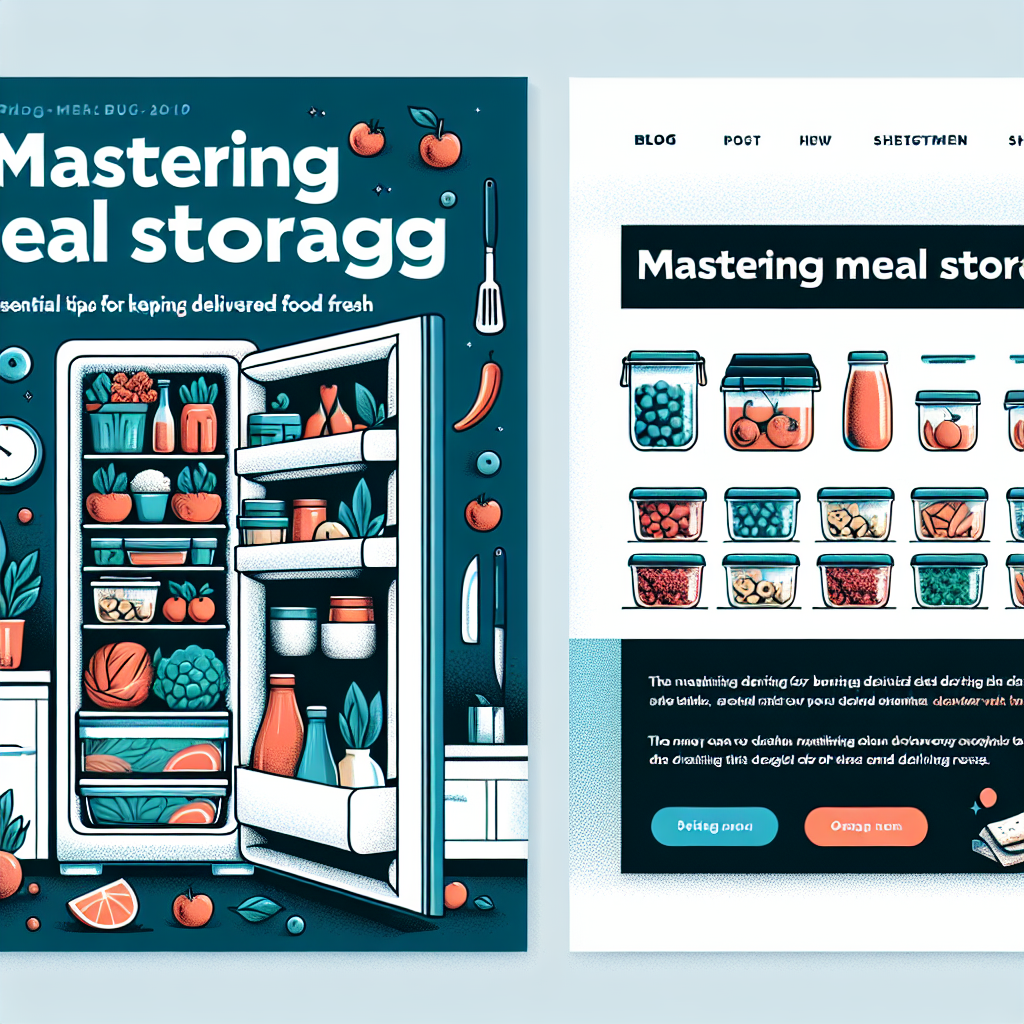In today’s fast-paced world, food delivery services have become a significant part of our meal preparation routines. However, having meals delivered isn’t just about enjoying them on the same day; it’s also about storing them safely and efficiently for later use. In this article, we’ll explore essential tips for mastering meal storage to keep your delivered food fresh, ensuring you get the most value out of each meal.
Why Proper Meal Storage Matters
Keeping your delivered meals fresh isn’t just a matter of taste; it’s also crucial for food safety. Improper storage can lead to spoilage, waste, and potential health risks. By learning how to store your meals correctly, you’ll not only enjoy your food longer but also save money and reduce food waste.
Know When to Refrigerate or Freeze
The 2-Hour Rule
One of the most important guidelines to remember is the 2-hour rule. According to the USDA, perishable food should not sit out at room temperature for more than two hours. If you’ve received a delivery, be sure to refrigerate it promptly.
Refrigeration vs. Freezing
- Refrigeration is best for meals you plan to eat within the next few days. Most cooked meals can remain in the fridge for up to four days.
- Freezing, on the other hand, is ideal for extending the life of your meals beyond a week. Frozen meals can last anywhere from three to six months, depending on the type of food. Just be sure to package them properly to prevent freezer burn!
Use Airtight Containers
Why Airtight Matters
For optimal freshness, invest in high-quality airtight containers. These will keep air and moisture at bay, slowing down the spoilage process. Glass containers are particularly effective because they also limit the chances of chemical leach from plastics.
The Right Sizes for Different Meals
Different meals require different types of containers. Have a variety of sizes on hand, from small ones for sauces to larger ones for complete meals. Labeling containers will help you keep track of what you have and when it was prepared, ensuring you eat the oldest meals first.
Portion Your Meals Wisely
Meal Prepping and Portion Control
When you receive a food delivery, consider breaking down larger dishes into individual portions right away. This not only makes reheating easier but also helps avoid over-serving yourself, preventing food waste while promoting healthier eating habits.
Fun Tip: Use Muffin Tins for Unique Portions
If you’re prepping smaller portions of different dishes, muffin tins can be an innovative solution. Muffin tins are perfect for separating individual servings of casseroles, chili, or even desserts, making your future meals exciting and diverse!
Embrace the Power of Reheating
Methods Matter
Reheating can sometimes lead to a less-than-ideal dining experience if not done correctly. Each method has its pros and cons:
- Microwave: Quick and convenient, but can result in uneven heating. Stir meals midway for even warmness.
- Oven: Ideal for maintaining texture, especially for baked dishes. Preheat to about 350°F and reheat for 20-30 minutes, depending on the dish.
- Stovetop: This method works well for soups and stews, allowing for good control over the temperature.
Safely Reheat to the Right Temperature
Always ensure that reheated food reaches an internal temperature of 165°F to be safe for consumption.
Use Smart Storage Tips for Specific Foods
Dairy and Vegetables
Foods like dairy products and fresh vegetables require unique storage considerations. Always keep dairy products on the top shelf of your refrigerator where it’s coldest. When it comes to vegetables, crisper drawers are your best bet, keeping humidity levels in check to maintain freshness.
Grain-based Meals
Dishes that include rice or pasta can dry out quickly. To prevent this, add a splash of water when reheating, and cover the dish with a lid or plastic wrap in the microwave or oven to retain moisture.
Conclusion
Mastering meal storage is essential for enjoying delivered food at its best. By following these tips—understanding when to refrigerate or freeze, using airtight containers, portioning wisely, reheating correctly, and utilizing specific storage methods—you’ll ensure that your meals remain fresh and tasty for as long as possible. Embracing these practices will not only enhance your dining experience but also contribute to a more sustainable lifestyle by reducing food waste.
So next time that delicious meal lands on your doorstep, you’ll be ready to store it like a pro!
Additional Resources
For more tips on meal storage and safe food handling practices, be sure to check out resources at the USDA and food safety organizations. Remember, fresh food is happy food!
Feel free to share your experiences or storage tips in the comments below! Let’s keep our meals delicious and fresh together.


